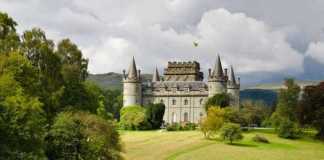Are you thinking of travelling to Beijing and wondering what the best things are to do? Well, check out this three-day Beijing itinerary for a jampacked, culture and history filled Chinese adventure. Beijing is a city steeped in history, charm, and culture, with plenty of things to see and do. From the epically large Forbidden City to the traditional hutongs and the impressive Temple of Heaven, Beijing is bursting with cultural refinement.
Contents
- Planning Your Beijing Itinerary
- Where to Stay?
- Getting Around Beijing
- How to Pay?
- Where To Eat + How To Order
- The Ultimate 3 Day Beijing Itinerary
Planning Your Beijing Itinerary
Where to Stay?
Beijing is a big city with a population of 21.5 million people.
As the capital of China, Beijing has a myriad of hotels for you to choose from and there’s even a decent hostel scene for those travelling on a budget.
The biggest question you are probably going to have is where to stay? Where is the best location to have easy access to the top attractions?
If it’s your first time in Beijing, then Wangfujing is a good place to start.
There’s so much going on here, from street food, to shopping and it’s also an easy walking distance from Tiananmen Square and the Forbidden City.
If you are looking to absorb culture and tradition, then Qianmen is a great spot to look for accommodation as the area has a mix of new and old architecture. Hotels in Qianmen are budget friendly and it is certainly busy because of its central location but also super convenient.
Getting Around Beijing
Traveling around Beijing (especially in the height of summer) is no mean feat.
Beijing temperature reaches 88F (31C) and that’s not even taking into consideration the humidity so, it’s good to know how to get around the city because you can’t just walk to all the locations on this itinerary.
There are several convenient ways to navigate around Beijing.
- taxis around the city are relatively inexpensive compared to western taxi prices.
- download apps like DiDi (China’s Uber) which give more affordable rates.
- take the subway which is super convenient and affordable.
- Beijing’s subway is the second largest in the world behind Shanghai so you just know it will take you anywhere you need to go.
- take the bus, but it’s a little more inconvenient especially if you don’t know any Chinese and it can get quite uncomfortable in the summer months.
How to Pay?
If you spend enough time in China, you will soon notice that people mostly pay on their phones using WeChat or Alipay.
China is firmly entrenched in QR code culture.
It used to be very difficult for foreigners to use such services for mobile money but since 2023 We Chat Pay and Alipay have introduced methods to be able to link foreign bank cards to these applications.
So download these apps and sort out the bank before you set off for China and if that fails, you certainly cannot go wrong bringing cash in case of any issues.
While cash is rapidly becoming a thing of the past you can still use it.
In places like Beijing where there are more tourists’ businesses are used to it and you shouldn’t have too many issues.
If you notify your bank of your visit to China, you shouldn’t have too many issues using your bank card for bigger purchases and there are banks everywhere to withdraw.
Where To Eat + How To Order
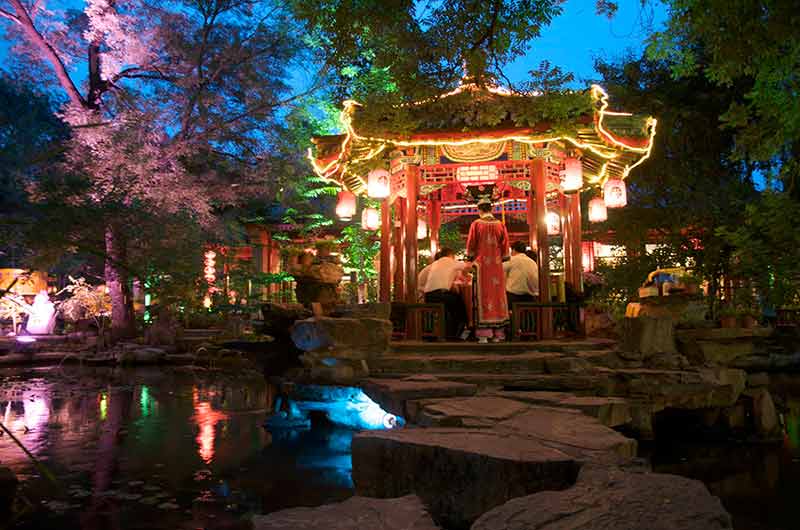
Beijing is huge and therefore there are a plethora of places to eat.
It feels like a general rule in Asia but just because a place doesn’t look sophisticated, it doesn’t mean that the food isn’t good.
Sometimes street food and cheap looking restaurants you happen across might just be some of your favorite meals of the trip.
Aside from famous foods like Peking duck, jiaozi (dumplings) and Beijing hot pot, the best bet for finding good food in Beijing is to be brave and try a place that catches your eye.
In terms of ordering, many restaurants will have picture menus which are super helpful.
Using the phrase Wǒyào zhège(我要这个) will be super helpful – it means “I want this.”
Then you can point to what you want.
It is also helpful to know words for different meats like chicken (鸡肉 Jīròu), pork (猪肉 Zhūròu), beef (牛肉 niú ròu) and fish 鱼肉 (Yúròu).
If you are a little worried about the spice in China ask for it “not spicy” (不辣 Bù là).
Wo Ting bu dong!
The idea of visiting China and not knowing any Chinese can be quite intimidating.
You won’t be able to read any signs or speak the language, but it shouldn’t be more intimidating than any other non-English speaking country.
You can visit China without speaking any Chinese but it’s helpful if you download a translation app such as Google translate before you go.
Remember, without a VPN you won’t be able to download apps like Google Translate when you are there, so do it beforehand.
“Wǒ tīng bù dǒng” (我听不懂)is a bit of a joke in China for foreigners.
A foreigner first introduced to the Chinese language will use this phrase a lot.
It simply means “I don’t understand”.
Below are some useful Chinese phrases that will help you no end as a tourist in China.
- Nǐ hǎo (你好) – hello
- Xǐshǒujiān zài nǎ? (洗手间在哪) – Where is the bathroom?
- Zài nǎlǐ在哪里 – Where?
For more things to do in China read:
- 25 Famous Landmarks in China
- Best Time To Visit China
- 20 Ways To Celebrate Christmas In China
- 20 China Beaches For Your Bucket List
- 20 Things To Do In Shanghai At Night
- 20 Things To Do In Guangzhou
- 21 Places To Visit In China
- 7 Things To Do In Xiamen
- 20 Things To Do In Xian
- Yangtze River Cruise
- Inner Mongolia In Winter
- Places To Visit In Yunnan
- 20 Things To Do In Beijing At Night
- 20 Smart Cities in China
- Winter in China – 20 Things To Do
- 15 Things China Is Famous For
- Living in China – Everything You Need To Know
- 20 Endemic Animals In China And Where To See Them
- 12 National Parks in China
- 20 Things To Do In Chengdu At Night
- 20 Things To Do In Chongqing At Night
The Ultimate 3 Day Beijing Itinerary
Day 1: The Great Wall of China + Peking Duck Dinner
As the Great Wall will no doubt be one of the highlights of a trip to Beijing, it’s a good idea to schedule it for your first day in case you need to postpone it for weather reasons.
There’s nothing worse than the best part of your trip being on the last day and then you are forced to walk around in the rain with no view!
The Great Wall of China – Mutianyu Section
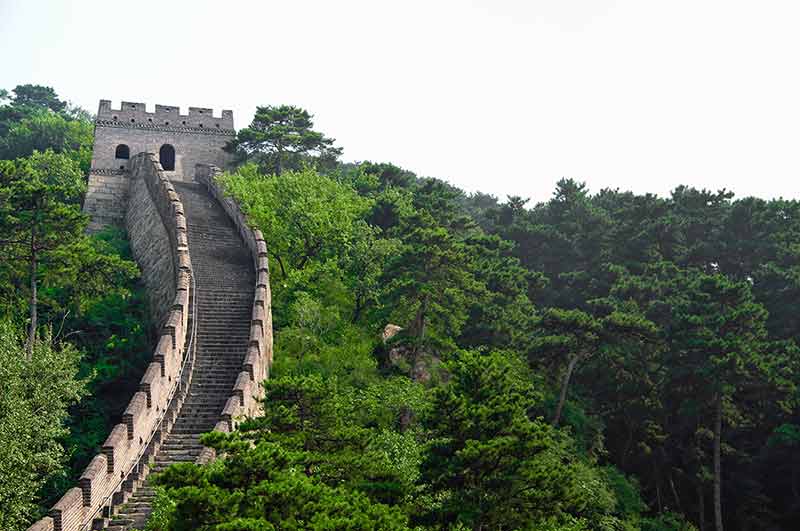
Visiting the Great Wall of China has got to be on top of your Beijing and China bucket lists.
If it is your first time to Beijing, then you simply cannot miss a visit to the wall.
The Great Wall is 21,196 km (13,170 mi) long and stretches from the eastern seaside to the desert in northwestern China.
Taking more than 2,000 years to construct, just know that when visiting the Great Wall, you are stepping on a lot of history.
There are many sections of the Great Wall that you can visit close to Beijing.
While hordes of locals travel to Badaling, the Mutianyu Section is far less crowded and beautiful.
Mutianyu is in Huairou County around 73 km (45 mi) from Beijing city center.
This section of the wall has been restored so you really get a feel for what it used to look like.
This section looks beautiful all year round but especially in autumn when the temperatures are more bearable, and the trees are bursting with colour.
Not only can you enjoy hiking and gazing at the scenery but there is also a cable car and a toboggan.
There are several ways to reach Mutianyu from Beijing.
If you are solo travelling or just want a hassle-free way to reach the wall, then your best bet is to take the Tourist Bus that leaves from Qianmen or Dongzhimen.
This costs around 80 RMB ($11) for a round trip.
The cheapest way to get there is by the 916 Express and the H23, H24, H35 or H36 bus.
The journey costs around 12RMB ($1.66).
You can also take a taxi or China’s version of Uber called “DiDi”.
A one-way ride will cost around 220 RMB ($30).
If you use a translation app to ask them if they will wait, often they will as it’s quite a long journey and they will want to guarantee a ride back.
Tickets to this section of the wall cost around 40 RMB ($5.53) plus a 20RMB ($2.76) shuttle bus fee to reach the base of the wall.
Mutianyu Section of the Great Wall is at Huairou District, 101406.
Eat Peking Duck
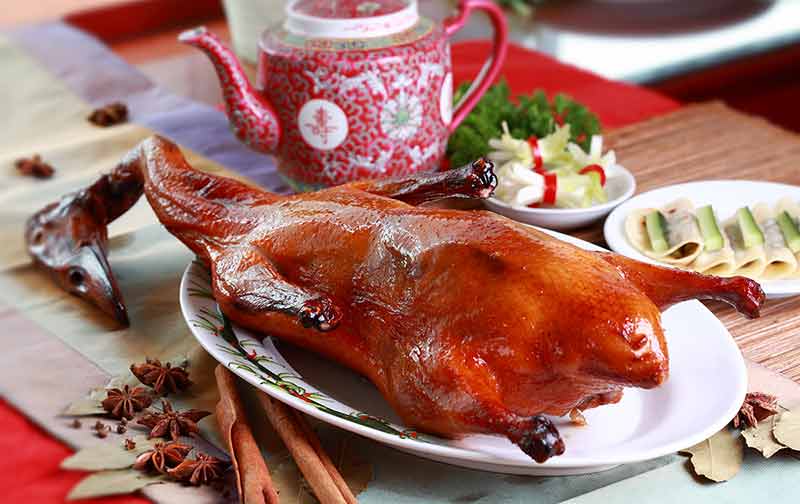
After a long day of walking along the undulations of the wall there’s no better final stop than to a restaurant to enjoy Peking duck.
You simply cannot miss trying the iconic Peking duck and with so many duck restaurants in China it can be a little overwhelming to decide on the best place to eat.
If you fancy finding a place for yourself then be on the lookout for the Chinese characters 鸭子(Yāzi).
Siji Minfu Kaoya (Peking Chamber) 四季民福烤鸭店 is one of the best places to try this local delicacy.
You cannot make reservations so you should plan to arrive before you get too hungry as there is often a line.
This place is atmospheric and the food is top tier.
Another excellent choice is Quan Jude 全聚德, which is a famous Peking duck brand.
It’s steeped in tradition, and you just know the food is going to be good.
If you are looking for something simple after a long day at the Great Wall, then head to Jingzun 京尊烤鸭店.
Here the wait times are minimal and it’s also a more affordable option but still with delicious flavor.
Day 2: Forbidden City, Tiananmen Square And Hutongs
Visit The Forbidden City
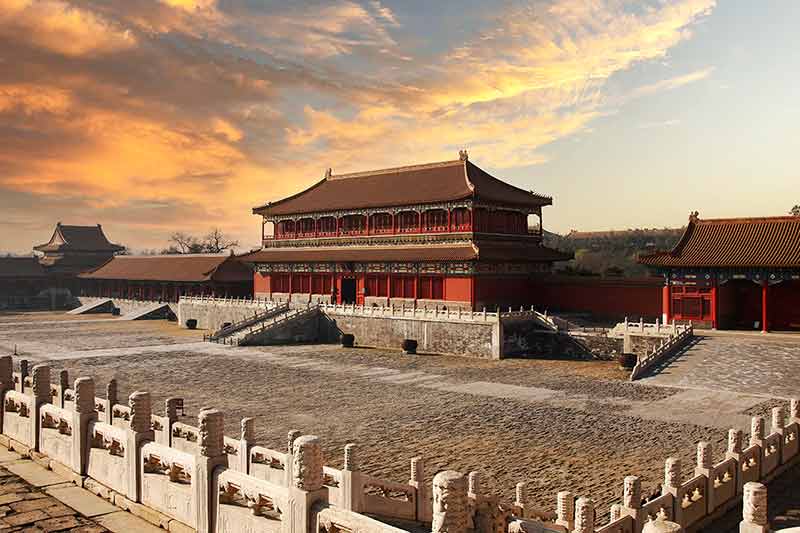
On day two of your trip to Beijing, start by heading to the Forbidden City, which is one of the famous UNESCO World Heritage sites in China.
The Forbidden City is a palace complex in Dongcheng District and the epicentre of the Imperial City of Beijing.
The Forbidden City was commissioned in 140 by Yongle emperor during the Ming Dynasty and acted as the imperial palace during the Qing Dynasty.
When visiting the Forbidden do not underestimate its size!
The palace complex is a whopping 178 acres (72 hectares), that’s why it’s suggested that you embark on this Beijing activity early in the morning.
Not only will the crowds be fewer, but it will also not be as hot walking around.
You will need to purchase tickets for the Forbidden City in advance as there are a limited number of tickets available each day to reduce crowds.
If you will be visiting Beijing during any kind of national holiday or even on the weekend in summer be sure to book weeks in advance.
Tickets can be booked here.
Between April 1st and October 31st (the high season) tickets are 60 RMB ($8.29) and between November 1st and March 31st are 40 RMB ($5.53).
You will need to allow a minimum of two hours to explore the Forbidden City. Don’t underestimate its size!
The Forbidden City is at 4 Jingshan Front St, Dongcheng, Beijing, 100009.
Wander Around Tiananmen Square
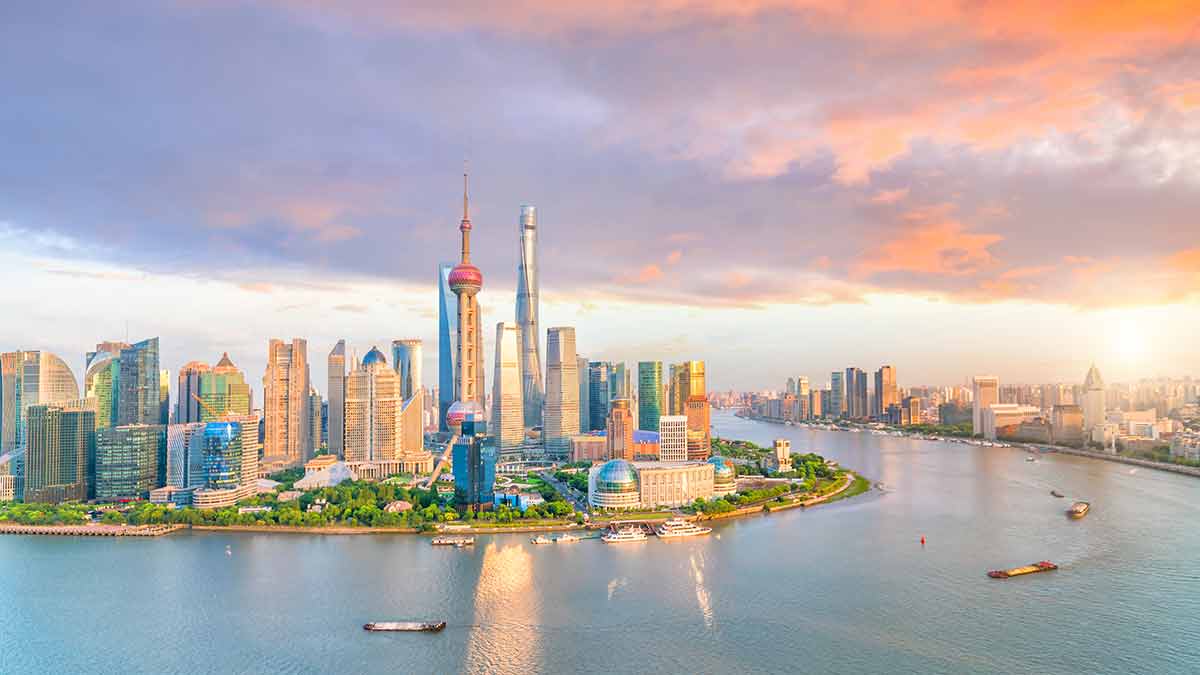
Tiananmen Square is right next to the Forbidden City so it’s an ideal next stop.
This is one of the largest and most famous public squares in the world.
It represents the heart of Beijing’s political history.
At Tiananmen Square you will find Mao Zedong’s Mausoleum, the People’s Hero Monument, and the National Museum.
Before being allowed to enter the square you do have to go to security so try not to take much with you to avoid long waits. It’s often quicker to join an organised tour.
Tiananmen Square is at Beijing, Dongcheng, 前门 邮政编码: 100051. A great way to explore is to visit Tiananmen, the Forbidden City and Wall on a private tour.
Explore The Hutongs
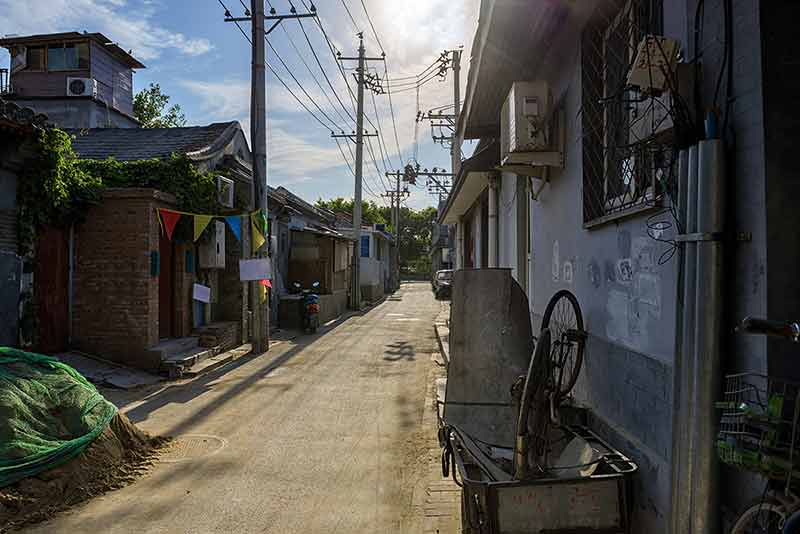
Hutongs refer to the alleyways that make up the old part of Beijing as well as other cities in China.
Beijing’s hutongs were built during the Yuan, Ming and Qing Dynasties.
Beijing’s hutongs are a fascinating flashback to simpler times.
While Chinese modernity has expanded exponentially, the hutong still represents the traditional side of Chinese culture.
Many of the houses don’t have bathrooms so communal bathrooms are common here.
You can explore the hutongs on foot, or you can take a rickshaw tour around the alleys.
One of the best hutongs located close to Tiananmen Square is Jinsitao Hutong.
Quianmen’s Hutong and the hutong between the Drum Tower and Lake Shichahai are good options if you want to head north of the Forbidden City.
Day 3: Temple of Heaven, Lama Temple And Qianmen Street
Admire The Temple Of Heaven
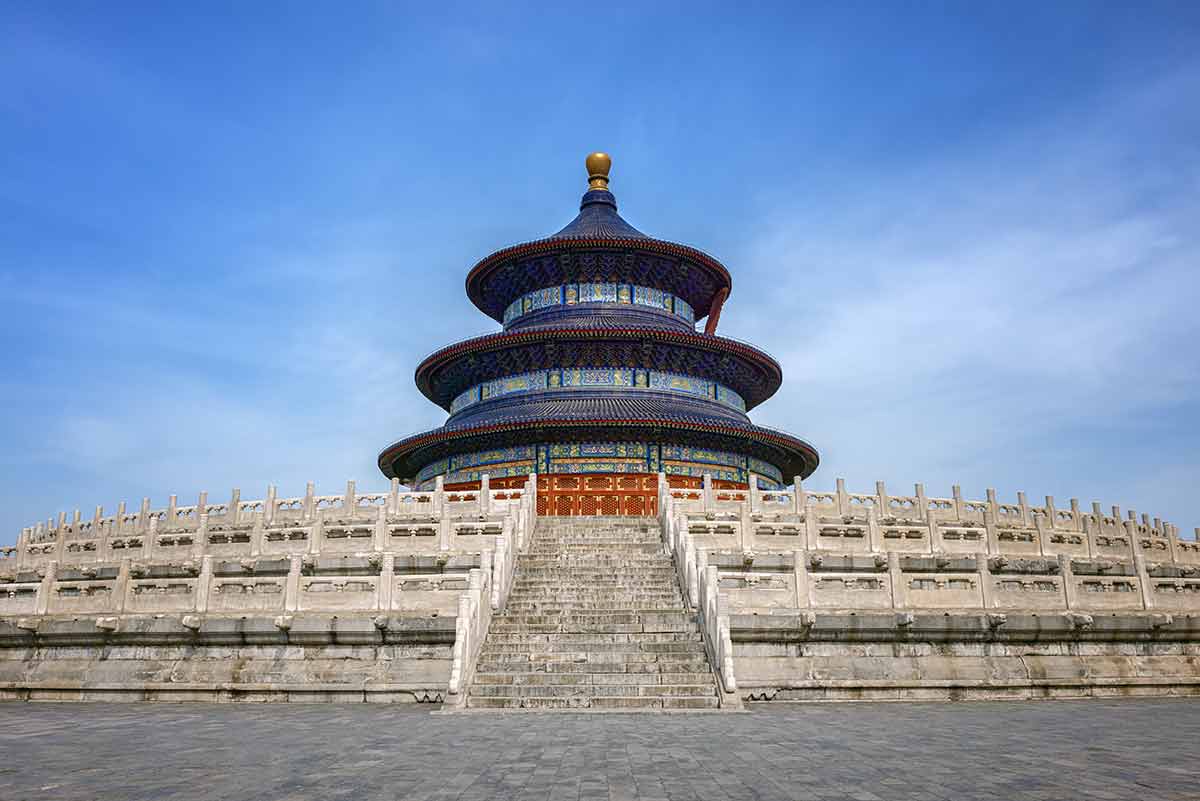
Day three is a day designed for exploring temples.
By far one of the most impressive and iconic temples in Beijing is the Temple of Heaven, it’s even a UNESCO World Heritage Centre.
The Temple of Heaven is around 5.5 km (3.4 mi) south of the Forbidden City founded in the first half of the 15th century.
The temple is a sacrificial altar which symbolizes the relationship between heaven and earth or the human world and God’s world.
This concept stands at the center of Chinese cosmogony.
It is always best to head to the Temple of Heaven early or book a tour as it’s another popular site and by 11 AM it can become very busy.
The Temple of Heaven is at 1 Tiantan E Rd, Dongcheng, 100061.
Discover Lama Temple
Lama Temple, also known as Yonghe Temple is a temple and monastery of Tibetan Buddhism, believed to be one of the greatest centers of Buddhism outside of Tibet.
The temple was built in 1694 for Emperor Yongzheng and has five main halls, each bigger than the one before.
It’s a beautiful temple to explore, with so much to see and so many nooks and crannies to explore.
Lama Temple is at 12 Yonghegong Ave, 国子监 Dongcheng, China, 100007.
Wander Along Qianmen Street
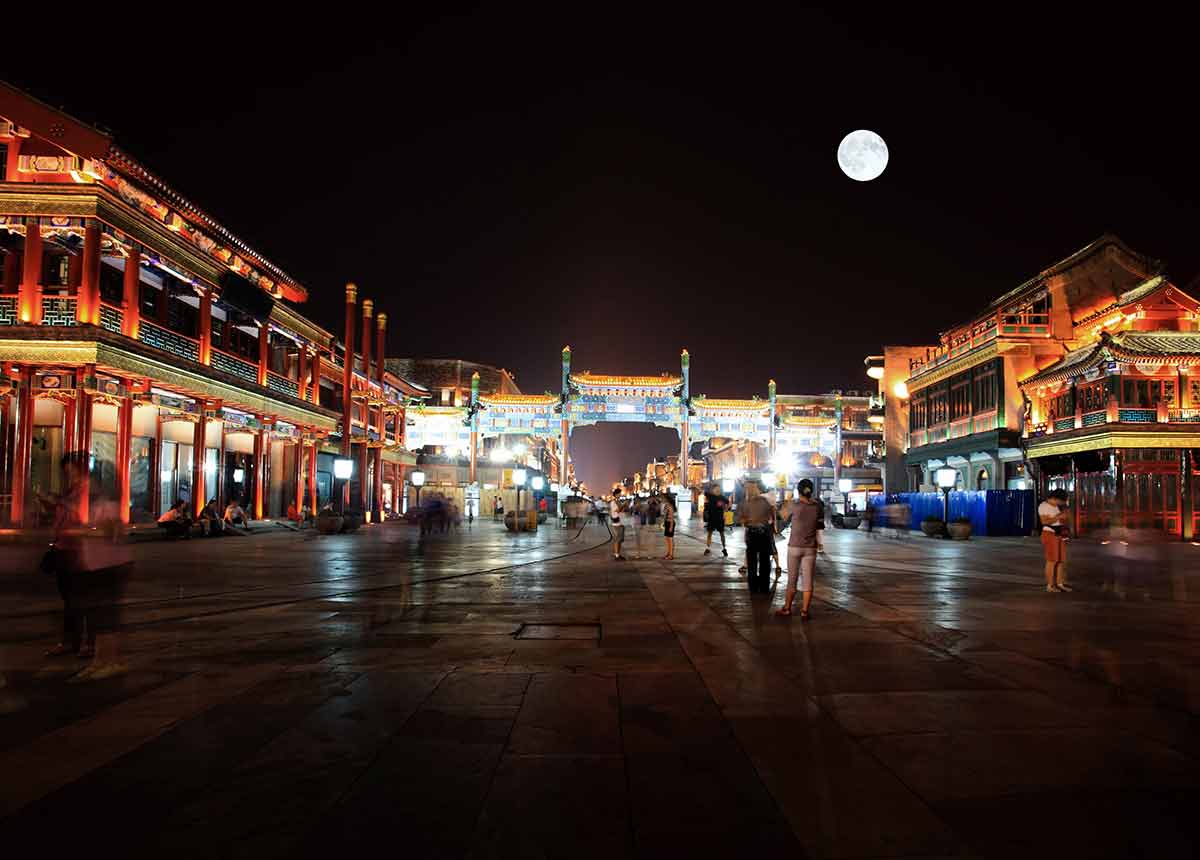
After a day of temple hopping, round off your evening with a trip to Qianmen Street, one of Beijing’s pedestrian walking streets.
Qianmen Street is around 40 minutes’ walk from the Temple of Heaven and runs from the Archery Tower of Qianmen in the north to Tiantan Park in the south.
The buildings that line the street are characterized by the architecture of the Qing Dynasty.
Today the street is known for its traditional cuisines, culture and old architecture.
Extended Beijing Trip
If you plan on spending a bit of extra time in Beijing, here’s how to extend your itinerary by two days.
Day 4 – Summer Palace And Beijing Olympic Park
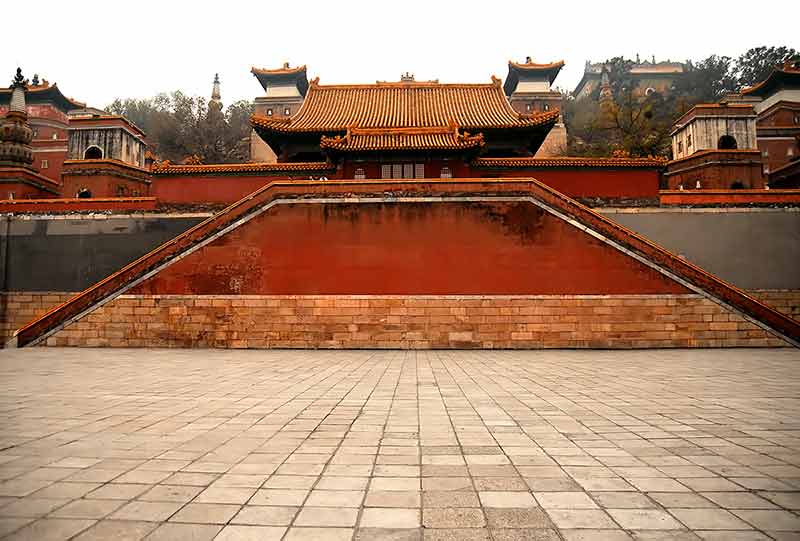
The Summer Palace and the Beijing Olympic Park are in the north of Beijing.
The Summer Palace was the summer location for Qing Dynasty emperors.
While wandering around the grounds of the Summer Palace you will see ornate buildings and lush gardens that all showcase how royalty used to live in the day.
After that you can head east to the Beijing Olympic Park where it’s cool to see the recognisable landmarks.
The Birds Nest stadium and the cube, bubble-like Aquatic Center are impressive and light up with LEDs in the evening.
The Summer Palace is at 19 Xinjiangongmen Rd, Haidian District, 100091. Book your tickets online to avoid the lines.
The Beijing Olympic Park is at X9VV+PF8, Chaoyang, 100875.
Day 5 – Beijing Zoo And Beihai Park
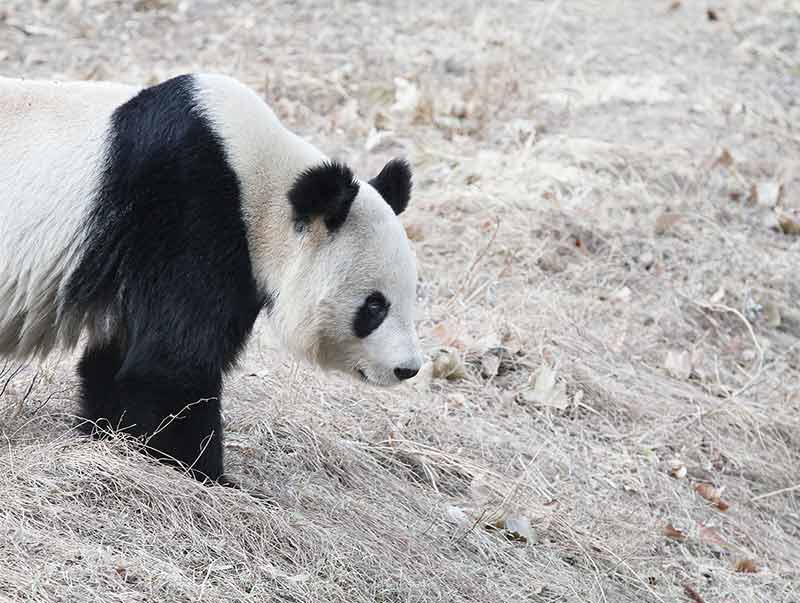
If you are visiting China but don’t have time to make a stop in Chengdu to see the Chengdu Research Base of Giant Panda’s, then you can head to Beijing Zoo where they have eight of their very own giant pandas.
From the zoo you can head southeast to Beihai Park, which was a royal garden with a large lake and beautiful pavilions.
If you are visiting Beijing in spring, add Beihai Park to your itinerary, as the spring flowers are stunning.
Beijing Zoo is at China, Beijing, Xicheng District, 西直门外大街137号 邮政编码: 100044.
Beihai Park is at 1 Wenjin St, 西安门 Xicheng District, China, 100034.
Looking for more itineraries? Try these:
- 10-day Japan Itinerary
- Osaka Itinerary
- The Perfect Nagoya Itinerary
- Hong Kong Itinerary
- Macau Itinerary
- Taiwan Itinerary
- 5-day Beijing Itinerary
- 7-day Greece Itinerary
- 10-day Portugal Itinerary
- 3-day Paris Itinerary
- 10-day France Itinerary
- 10-day Southern Spain Itinerary
- 10-day Northern Spain Itinerary
- 10-day Ireland Itinerary
- 3-day Athens Itinerary
- 10-day Iceland Itinerary
- 10-day Thailand Itinerary
- Bali Itinerary
- San Francisco Itinerary
- Oahu Itinerary
- Galapagos Islands Itinerary
- Sweden Itinerary
- Balkan Itinerary
- Tasmania Itinerary
- Sri Lanka Itinerary
- Philippines Itinerary
- 3-day Shanghai Itinerary
- 10-day China Itinerary (Wildlife/Nature)
- 3-day Lisbon Itinerary
- 3-day Porto Itinerary
- 7-day Tuscany Itinerary
- 5-day Tokyo Itinerary
Plan Your Trip

Rent A Car – Find the best car rental rates at Discover Cars. They compare car hire companies to provide you with the best deal right now.

Find A Hotel – If you’re curious about this article and are looking for somewhere to stay, take a look at these amazing hotels.
